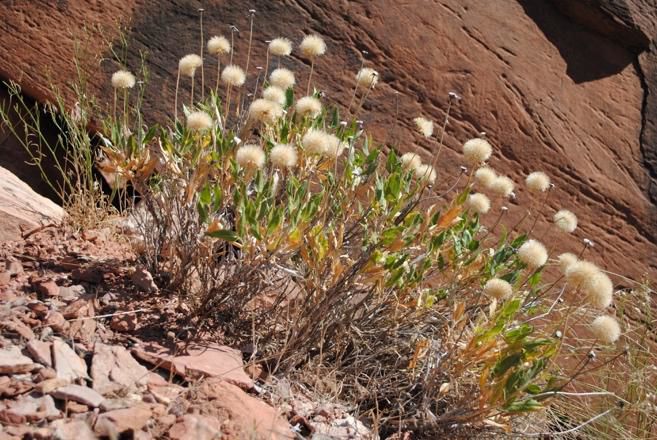Some information may be outdated.
Flowers are in bloom around Moab and now is the time to learn about them.
Fruit trees are showing off their soft-hued flowers in the millions. Desert wildflowers are displaying their blooms alongside roads and trails, in fields and lawns. What happens next?
On Thursday, April 25, Joel Tuhy will present his lecture “Where Do All The Wildflowers Go?”
This free talk is being sponsored by the Canyonlands Natural History Museum and the Moab Museum. It begins at 6 p.m. at the Moab Information Center (MIC) located at the corner of Center and Main.
As the spring months turn to summer, flowers will fall from the fruit trees and the wildflowers will eventually drop their blooms to turn their efforts to different life-sustaining and propagation tasks. When their job is done, the flowers are either shed or remain on the plant as dried flowers.
“[People] don’t look at these plants again until they are in bloom the next spring,” Tuhy said. “Some of these plants are visually interesting once their flowers are gone, during the nonflowering season.”
Tuhy is the director of conservation science at The Nature Conservancy in Utah.
“Joel Tuhy is an icon for the Moab Information Center lecture series,” said Sharon Kienzle, manager of the MIC. “He gives a lecture (almost every year), always about wildflowers, but each lecture is unique and different. He’s an excellent presenter.”
Tuhy’s upcoming wildflower presentation focuses on the wildflower plants themselves. What are these plants doing once their flowers are gone? What interesting shapes or striking features can we now note?
“People are so enamored with the plants while they are blooming,” Tuhy said, “that once the flowers go, they turn their attention to something else. I think that plants in their post-flowering form have visual excitement.”
All summer, people will look at the beautiful leaves of trees and hear them rustle in the breeze. The wildflowers, on the other hand, tend to be less noticeable after they shed their colorful adornments.
No longer flowered eye candy, these plants might even seem to disappear into the background as people turn their attention to other visually striking aspects of the desert landscape.
Wait a minute … look again at these wildflower plants.
Their flowers may be gone, but the wildflower plants are still growing.
Aspects of their environments (such as elevation, soil and climate) sculpt the plants into specific shapes, Tuhy said.
A wildflower plant automatically considers questions such as, am I living in a bountiful location (based on the amounts of nutrients, water and sunlight)? How will I adapt myself to my resources so I can get the most from my growing season and create my future progeny?
Their bodily arrangements honor the math-based, repeating patterns of whorls, branchings and spirals we see throughout nature. All summer, they will keep growing their seed pods full of fertilized seeds, casting them into fascinating shapes and forms: smooth, elongated, twisted, pointy.
In the autumn, after the blooms and above-ground plant parts have died, their skeletal bodies, seed pods, and flower remnants enhance the fall and winter landscapes.
Wildflowers continue to add beauty to the landscape all year round, not just while they are in bloom.
The act of blooming is a mandatory part of a wildflower’s life cycle.
For all plants, not just wildflower plants, flowers attract living pollinators (such as insects, birds and bats) to them. The pollinators flit from flower to flower, gathering the nectar and pollen rewards contained within. When a pollinator enters a flower, its body inadvertently picks up some pollen grains while leaving behind some other grains.
The pollen deposited inside flowers fertilizes the seeds at the flower bases, and the plant grows fertile seeds and no longer needs its flowers.
Once the flowers are either shed or remain dried on the stems, the plant then focuses its energy into growing its seeds and body.
Moab Information Center hosts ‘Where Do All the Wildflowers Go?’
When: Thursday, April 25, at 6 p.m.
Where: Moab Information Center (MIC) at the corner of Center and Main
Cost: Free
Information: Visit discovermoab.com
“I think that plants in their post-flowering form have visual excitement.”
Appreciate the coverage? Help keep local news alive.
Chip in to support the Moab Sun News.





